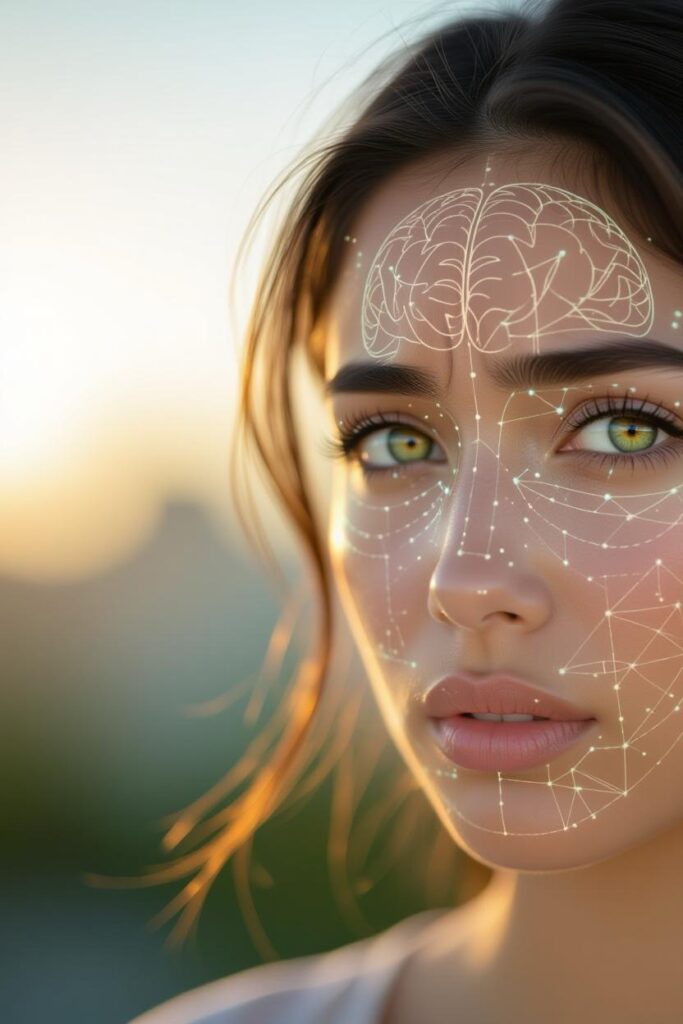Deception detection helps spot lies in conversations, investigations, or negotiations by analyzing behaviors and cues. Liars often show stress through inconsistencies, fidgeting, or face-touching, while verbal signs include hesitations, over-detailed stories, or minimizing words like “sort of.” Nonverbal cues like micro-expressions—brief emotional flashes—can reveal hidden feelings, though myths like avoiding eye contact aren’t reliable. Tools like polygraphs measure stress responses, but they’re flawed, while fMRI and eye-tracking offer precise brain-based insights. Methods like Criteria-Based Content Analysis and Reality Monitoring assess statement credibility. Machine learning boosts accuracy by combining verbal, nonverbal, and physiological data, reaching up to 90% in 2025 studies. No single cue confirms deceit—context and clusters matter. Ethical concerns and countermeasures like practiced lies limit reliability, but combining human intuition with technology improves results for uncovering truth.
Long Version
Mastering the Art of Deception Detection: Uncovering Lies Through Science and Observation
Deception detection, the process of identifying falsehoods, misleading statements, or fabrications, has fascinated humans for centuries. Whether in everyday interactions, criminal investigations, or high-stakes negotiations, discerning truthfulness from deceit is crucial for establishing credibility and veracity. While no method guarantees perfect accuracy—human lie detectors typically hover around 54% success rates, barely above chance—advances in psychology, neuroscience, and technology offer powerful tools to spot indicators of lying. This article delves into the multifaceted world of detecting lies, exploring behaviors, signs, cues, and sophisticated techniques to provide a complete resource for understanding and applying these insights.
Understanding the Foundations: What Makes Deception Detectable?
At its core, deception involves conveying false information with intent to mislead, often driven by emotion, stress, or anxiety. Liars must manage their narrative while suppressing truthful details, leading to leakage—subtle slips where true feelings or facts emerge. Establishing a baseline, or a person’s normal behavior under low-stress conditions, is essential for spotting deviations that signal deceit. For instance, inconsistencies or discrepancies in a story, such as changing details across retellings, are classic tells of fabrication. These can manifest as verbal cues like speech hesitations, minimizing adverbs (e.g., “sort of”), or editing adverbs (e.g., “actually”), which suggest the speaker is refining their falsehood on the fly.
Honesty, in contrast, flows more naturally, with fewer self-references and negative emotions in statements. Generalizing terms like “always” or “never” might indicate avoidance of specifics, while exclusive words (e.g., “but,” “except”) can highlight omissions. Lexical diversity—the variety of words used—often decreases in lies as cognitive load increases, forcing simpler language.
Deception varies by context: high-stakes lies, where consequences are severe, amplify stress responses, making detection easier than low-stakes lies. Idiosyncratic behaviors, unique to individuals, further complicate universal rules, emphasizing the need for personalized baselines.
Nonverbal Cues: The Silent Betrayers of Deceit
Body language and nonverbal cues provide a wealth of signals for deception detection. Facial expressions, particularly micro-expressions—fleeting, involuntary displays lasting 1/25th to 1/5th of a second—can reveal concealed emotions like fear or guilt. Subtle expressions, such as a brief eyebrow raise or lip press, often leak during attempts to suppress true feelings. Recent 2025 research confirms micro-expressions enhance deception detection accuracy, with machine learning models achieving up to 74% success by analyzing these alongside other facial action units.
Gaze avoidance or lack of eye contact is a common myth; while some liars avert their eyes due to anxiety, others overcompensate with prolonged stares. More reliable are fidgeting, restless movements, posture changes, or excessive face-touching, which stem from nervous energy. These behaviors increase under stress, but they’re not foolproof—innocent anxiety can mimic them. Research debunks many nonverbal myths: no single cue like gaze aversion reliably indicates lying, as cultural and individual differences play significant roles.
In high-stakes scenarios, such as airport security, programs like Screening of Passengers by Observation Techniques (SPOT) train observers to spot clusters of these cues, though their effectiveness is debated. Synerology, a holistic approach combining body language with verbal analysis, offers another framework for interpreting these signals.
Verbal Cues and Statement Analysis: Listening for Lies
Verbal cues complement nonverbal ones, focusing on how words reveal deceit. Over-detailed explanations often signal fabrication, as liars overcompensate to appear credible. Voice changes, such as rising pitch or hesitations, indicate stress from maintaining the lie. Voice analysis tools measure these physiological responses, like tremors or pitch variations, to flag potential falsehoods.
Advanced statement analysis techniques include Criteria-Based Content Analysis (CBCA), which scores statements on criteria like logical structure and spontaneous corrections—higher scores suggest truthfulness. Reality Monitoring evaluates whether details seem derived from real experiences (e.g., sensory specifics) or imagination. Scientific Content Analysis scans for linguistic patterns, while Cognitive Credibility Assessment imposes mental load to expose liars, who struggle more with complex tasks.
Strategic Use of Evidence, where interviewers withhold key facts and observe reactions, and Reality Interviewing, which encourages detailed narratives, boost detection rates by exploiting liars’ inconsistencies. These methods, rooted in cognitive psychology, outperform passive observation.
Physiological and Neuroscientific Approaches: Beyond Behavior
For objective measures, physiological responses offer insights. The polygraph, or lie detector, monitors heart rate, blood pressure, respiration, and skin conductance, assuming lies cause stress spikes. However, it’s controversial—accuracy ranges from 70-90% in controlled settings but drops due to countermeasures like controlled breathing. Critics note it detects anxiety, not lies, leading to false positives.
Brain activity provides more precision. Functional MRI (fMRI) lie detection scans for patterns in regions like the prefrontal cortex, active during deception. Event-related potentials (ERP), including P3 amplitude (linked to recognition) and P100 amplitude (early attention), detect concealed knowledge. Ocular-Motor Deception Tests track eye movements for cognitive load indicators.
Emerging 2025 research integrates these with automated detection via machine learning, analyzing multimodal data for higher accuracy—up to 90% in some models. Hybrid deep neural networks, for example, fuse micro-expressions with pupil variations to differentiate truths from lies.
Debunking Myths and Addressing Limitations
Despite these tools, deception detection is imperfect. Common myths, like eye contact equating to honesty, persist but lack empirical support. Nonverbal cues are unreliable in isolation; clusters and context matter. Countermeasures, such as practicing lies or using drugs to calm responses, undermine even advanced methods.
Ethical concerns arise, especially in forensic or security applications, where biases can lead to wrongful accusations. Balanced training, combining human intuition with technology, yields the best results—trained professionals reach 90% accuracy in some scenarios.
Future Directions: Technology and Integration
As machine learning evolves, automated systems promise real-time deception detection in interviews or videos. Integrating verbal, nonverbal, and physiological data will refine accuracy, but human oversight remains vital to interpret nuances.
In summary, spotting deception requires a toolkit of indicators—from inconsistencies and fidgeting to fMRI and CBCA—applied with skepticism toward myths. By mastering these, you gain a edge in navigating a world rife with potential deceit, fostering greater honesty in interactions.

Hashtags For Social Media
#DeceptionDetection #LieDetection #SpotLies #BodyLanguage #MicroExpressions #PsychologyTips #Lying #Deception #Lies #Truth #Manipulation #Gaslighting #Liar #Betrayal #EmotionalAbuse #Narcissist #FacialCues #BehaviorAnalysis #NonverbalCues #Psychology #Mindset #TrueCrime #LearnBodyLanguage #BehavioralPsychology #PsychologyTricks #SignsOfLying #HowToSpotALiar #Deceit #Fraud #WakeUp
Related Questions, Words, Phrases
how to spot a liar | signs someone is lying | body language cues for deception | micro expressions explained | how to detect lies in conversation | verbal indicators of deceit | psychology of lying | best lie detection techniques | nonverbal signs of dishonesty | how to tell if someone is fabricating a story | common myths about lie detection | using polygraph for truth verification | brain scans for detecting lies | fmri lie detection accuracy | voice changes when lying | fidgeting as a sign of deception | eye contact and lying myths | over-detailed explanations mean lying | statement analysis for credibility | criteria-based content analysis guide | reality monitoring in deception | cognitive credibility assessment methods | strategic use of evidence in interviews | high-stakes vs low-stakes lies | machine learning for lie detection | 2025 advances in deception tech | ethical issues in lie detecting | countermeasures against lie detectors | spotting inconsistencies in stories | face-touching as a lie indicator | physiological responses to deceit | erp and brain activity in lying | how to read facial cues for truth | behavioral psychology tricks for spotting lies | training to become a human lie detector






